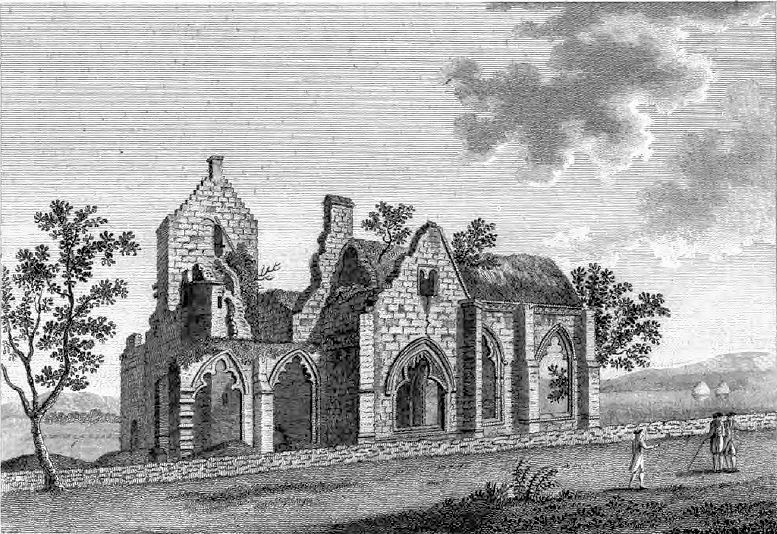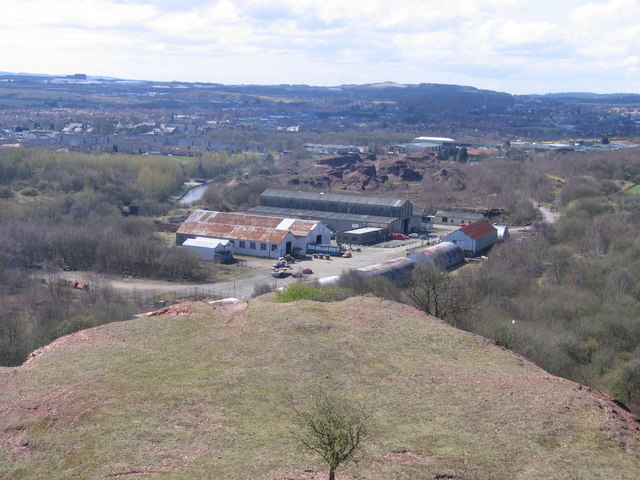|
Scottish Football Combination
The Scottish Football Combination was a football league football structure set up in Scotland for clubs outside the Scottish Football League and the reserves (or A sides) of some of the League members. History 1896–1911 The competition was formed on 7 July 1896, by sides from various other competitions, including the Scottish Football Alliance and the Midland League. A handful of reserve clubs also expressed a wish to join, and these were accepted; indeed, the competition was over-subscribed, Hamilton Academical being accepted as members over Albion Rovers by 9 votes to 7, and Third Lanark's A side being preferred to that of Clyde. Nutt of Wishaw Thistle was the inaugural president, with Willie Maley of Celtic as vice-president. Reserve sides won the first four titles; the prestige of the competition was such that on six occasions before 1906 member clubs were elected to the Scottish League. In 1906, another competition, the Scottish Football Union, was formed, and six clubs ... [...More Info...] [...Related Items...] OR: [Wikipedia] [Google] [Baidu] |
Scottish Football League
The Scottish Football League (SFL) was a league featuring professional and semi-professional football clubs mostly from Scotland.One club, Berwick Rangers, is based in the town of Berwick-upon-Tweed, which is located approximately 4 km south of the Anglo-Scottish border. From its foundation in 1890 until the breakaway Scottish Premier League (SPL) was formed in 1998, the SFL was the top level of football in Scotland. After 1998, the SFL represented levels 2 to 4 of the Scottish football league system. In June 2013, the SFL merged with the SPL to form the Scottish Professional Football League. The SFL was associated with a title sponsor from the 1985–86 season. As this sponsor changed over the years the league was known in turn as the Fine Fare League, B&Q League, Bell's Scottish Football League and finally as the Irn-Bru Scottish Football League. The SFL also organised two knock-out cup competitions, the Scottish League Cup and the Scottish Challenge Cup. History ... [...More Info...] [...Related Items...] OR: [Wikipedia] [Google] [Baidu] |
Ayr Parkhouse F
Ayr (; sco, Ayr; gd, Inbhir Àir, "Mouth of the River Ayr") is a town situated on the southwest coast of Scotland. It is the administrative centre of the South Ayrshire council area and the historic county town of Ayrshire. With a population of 46,982 Ayr is the 15th largest settlement in Scotland and largest town in Ayrshire by population. The town is contiguous with the smaller town of Prestwick to the north. Ayr was established as a Royal Burgh in 1205 and is the county town of Ayrshire. It served as Ayrshire's central marketplace and harbour throughout the Medieval Period and was a well-known port during the Early Modern Period. On the southern bank of the River Ayr sits the ramparts of a citadel constructed by Oliver Cromwell's men during the mid-17th century. Towards the south of the town is the birthplace of Scottish poet Robert Burns in the suburb of Alloway. Ayr has been a popular tourist resort since the expansion of the railway in 1840 owing to the town's fine ... [...More Info...] [...Related Items...] OR: [Wikipedia] [Google] [Baidu] |
Falkirk F
Falkirk ( gd, An Eaglais Bhreac, sco, Fawkirk) is a large town in the Central Lowlands of Scotland, historically within the county of Stirlingshire. It lies in the Forth Valley, northwest of Edinburgh and northeast of Glasgow. Falkirk had a resident population of 32,422 at the 2001 UK Census. The population of the town had risen to 34,570 according to a 2008 estimate, making it the 20th most populous settlement in Scotland. Falkirk is the main town and administrative centre of the Falkirk council area, which has an overall population of 156,800 and inholds the nearby towns of Grangemouth, Bo'ness, Denny, Camelon, Larbert and Stenhousemuir, and the cluster of Braes villages. The town is at the junction of the Forth and Clyde and Union Canals, a location which proved key to its growth as a centre of heavy industry during the Industrial Revolution. In the eighteenth and nineteenth centuries, Falkirk was at the centre of the iron and steel industry, underpinned by t ... [...More Info...] [...Related Items...] OR: [Wikipedia] [Google] [Baidu] |
Edinburgh City F
Edinburgh ( ; gd, Dùn Èideann ) is the capital city of Scotland and one of its 32 Council areas of Scotland, council areas. Historically part of the county of Midlothian (interchangeably Edinburghshire before 1921), it is located in Lothian on the southern shore of the Firth of Forth. Edinburgh is Scotland's List of towns and cities in Scotland by population, second-most populous city, after Glasgow, and the List of cities in the United Kingdom, seventh-most populous city in the United Kingdom. Recognised as the capital of Scotland since at least the 15th century, Edinburgh is the seat of the Scottish Government, the Scottish Parliament and the Courts of Scotland, highest courts in Scotland. The city's Holyrood Palace, Palace of Holyroodhouse is the official residence of the Monarchy of the United Kingdom, British monarchy in Scotland. The city has long been a centre of education, particularly in the fields of medicine, Scots law, Scottish law, literature, philosophy, the sc ... [...More Info...] [...Related Items...] OR: [Wikipedia] [Google] [Baidu] |
East Stirlingshire
East Stirlingshire Football Club is a Scottish association football club based in the town of Falkirk. The club was founded in 1881 and competes in the , in the fifth tier of the Scottish football league system. The club's origins can be traced to 1880 when a local cricket club formed a football team under the name ''Britannia'', based in the village of Bainsford.Shire's fans show mettle ''''. 9 July 2012. Retrieved 16 March 2013. The club was elected to the in ... [...More Info...] [...Related Items...] OR: [Wikipedia] [Google] [Baidu] |
Dykehead F
Dykehead is a rural locality in the North Burnett Region, Queensland, Australia. In the Dykehead had a population of 8 people. Geography The Auburn River forms most of the eastern and southern boundaries, while the Burnett River The Burnett River is a river located in the Wide Bay–Burnett and Central Queensland regions of Queensland, Australia. Course and features The Burnett River rises in the Burnett Range, part of the Great Dividing Range, close to Mount Gaeta ... forms a small portion of the eastern. The Dykehead and Auburn State Forests are within the locality. In the south is Auburn River National Park extending across the river into neighbouring Hawkwood. History In the Dykehead had a population of 8 people. References North Burnett Region Localities in Queensland {{WideBayBurnett-geo-stub ... [...More Info...] [...Related Items...] OR: [Wikipedia] [Google] [Baidu] |
Dumfries F
Dumfries ( ; sco, Dumfries; from gd, Dùn Phris ) is a market town and former royal burgh within the Dumfries and Galloway council area of Scotland. It is located near the mouth of the River Nith into the Solway Firth about by road from the Anglo-Scottish border and just away from Cumbria by air. Dumfries is the county town of the historic county of Dumfriesshire. Before becoming King of Scots, Robert the Bruce killed his rival the Red Comyn at Greyfriars Kirk in the town on 10 February 1306. The Young Pretender had his headquarters here during a 3-day sojourn in Dumfries towards the end of 1745. During the Second World War, the bulk of the Norwegian Army during their years in exile in Britain consisted of a brigade in Dumfries. Dumfries is nicknamed ''Queen of the South''. This is also the name of the town's professional football club. People from Dumfries are known colloquially in Scots language as ''Doonhamers''. Toponymy There are a number of theories ... [...More Info...] [...Related Items...] OR: [Wikipedia] [Google] [Baidu] |
Dumbarton F
Dumbarton (; also sco, Dumbairton; ) is a town in West Dunbartonshire, Scotland, on the north bank of the River Clyde where the River Leven flows into the Clyde estuary. In 2006, it had an estimated population of 19,990. Dumbarton was the capital of the ancient Kingdom of Strathclyde, and later the county town of Dunbartonshire. Dumbarton Castle, on top of Dumbarton Rock, dominates the area. Dumbarton was a Royal burgh between 1222 and 1975. Dumbarton emerged from the 19th century as a centre for shipbuilding, glassmaking, and whisky production. However these industries have since declined, and Dumbarton today is increasingly a commuter town for Glasgow east-southeast of it. Dumbarton F.C. is the local football club. Dumbarton is home to BBC Scotland's drama studio. History Dumbarton history goes back at least as far as the Iron Age and probably much earlier. It has been suggested that in Roman times Dumbarton was the "place of importance" named as Alauna in Ptole ... [...More Info...] [...Related Items...] OR: [Wikipedia] [Google] [Baidu] |
Dalbeattie Star F
Dalbeattie (, sco, Dawbeattie, gd, Dail Bheithe meaning 'haugh of the birch' or ''Dail'' ''bhàite'' 'drowned (''i.e.'' liable to flood) haugh') is a town in the historical county of Kirkcudbrightshire in Dumfries and Galloway, Scotland. Dalbeattie is in a wooded valley on the Urr Water east of Castle Douglas and south west of Dumfries. The town is famed for its granite industry and for being the home town of William McMaster Murdoch, the First Officer of the RMS ''Titanic''. Etymology Dalbeattie is a Gaelic name, recorded in 1469 as ''Dalbaty''. The first element of the name is Gaelic ''dail'' 'water-meadow, haugh'. There are two possible interpretations for the second element. The most common is Gaelic ''beithich'', genitive singular of ''beitheach'' 'abounding in or relating to birch trees', derived from ''beith'' 'birch'. Dalbeattie would thus mean 'haugh of the birch'. The second interpretation takes -''beattie'' to be ''bhàite'' (from ''bàite'') 'drowned', meanin ... [...More Info...] [...Related Items...] OR: [Wikipedia] [Google] [Baidu] |
Cowdenbeath F
Cowdenbeath (; sco, Coudenbeith) is a town and burgh in west Fife, Scotland. It is north-east of Dunfermline and north of the capital, Edinburgh. The town grew up around the extensive coalfields of the area and became a police burgh in 1890. According to a 2008 estimate, the town has a population of 14,081. The wider civil parish of Beith has a population of 17,351 (in 2011).Census of Scotland 2011, Table KS101SC – Usually Resident Population, publ. by National Records of Scotland. Web site http://www.scotlandscensus.gov.uk/ retrieved March 2016. See “Standard Outputs”, Table KS101SC, Area type: Civil Parish 1930 Toponymy The first element of the town's name comes from the surname ''Colden'' or ''Cowden'', often indicated in early forms as a possessor by the addition of , for example ''Cowdennyes Baith''. ''Beath'', the name of the wider parish, is from the Gaelic , meaning birch. History The earliest indication of human activity in the immediate vicinity of the cu ... [...More Info...] [...Related Items...] OR: [Wikipedia] [Google] [Baidu] |
Camelon F
Camelon (; sco, Caimlan, gd, Camlann) is a large settlement within the , . The village is in the , west of , south of and east of |
Broxburn Athletic F
Broxburn ( gd, Srath Bhroc, IPA: �s̪ɾaˈvɾɔʰk is a town in West Lothian, Scotland, on the A89 road, from the West End of Edinburgh, from Edinburgh Airport and to the north of Livingston. Etymology The name Broxburn is a corruption of "brock's burn", brock being an old Scots name for a badger whether from the Gaelic ''broc'' or the Pictish/Welsh/Brythonic ''Broch'' and burn being a Scots word for a large stream or small river. The village was earlier known as Easter Strathbrock (Uphall was Wester Strathbrock) with Strath coming either from the Gaelic ''srath'' or the Pictish/Welsh/Brythonic ''ystrad'' meaning a river valley. History The village that later became Broxburn probably originated around 1350 when Margery le Cheyne inherited the eastern half of the Barony of Strathbrock (Easter Strathbrock) on the death of her father, Sir Reginald le Cheyne III. The hamlet that grew up around her residence was then called Eastertoun (eastern town) after the land on which ... [...More Info...] [...Related Items...] OR: [Wikipedia] [Google] [Baidu] |








.jpg)
